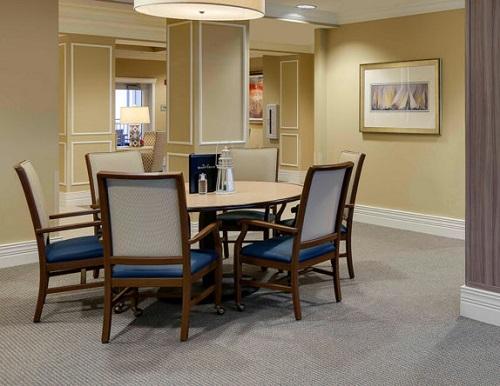As we age, our mobility and physical abilities may decline, making it more challenging to perform everyday tasks. Assisted living facilities aim to provide a comfortable and safe environment for seniors, and furniture plays a critical role in achieving this goal. Assisted living furniture is designed with the unique needs and limitations of seniors in mind, ensuring they have access to furniture that promotes independence, comfort, and safety.
One of the most critical factors in designing assisted living furniture is ensuring it is easy to use. Furniture should be designed to provide stability and support while allowing seniors to move and sit comfortably. Chairs, for example, should have armrests to assist in sitting and standing, while beds should be at a comfortable height to ease getting in and out of bed. In addition, furniture should be designed to be lightweight and easy to move, making it easier for caregivers to rearrange furniture as needed.
Another important aspect of designing assisted living furniture is ensuring it is safe. Falls are a significant concern for seniors, and furniture can either increase or decrease the risk of falls. Furniture should be designed to be stable and sturdy, reducing the risk of tipping or wobbling. Chairs and sofas should have firm cushions to provide support and prevent sinking, which can make it more challenging to stand up. Sharp edges or corners should be avoided, and furniture should be designed to be easy to clean to prevent the buildup of bacteria and other harmful germs.
Comfort is also a critical consideration in designing assisted living furniture. Seniors spend a lot of time in their rooms, and having comfortable furniture can improve their quality of life. Beds should be designed to provide support and comfort, with features such as adjustable heights, firm mattresses, and easy-to-use controls for adjustable features. Chairs and sofas should have comfortable cushions, with materials that are breathable and easy to clean. Designers should also consider factors such as color, style, and lighting, which can impact a senior's mood and overall well-being.
In conclusion, designing furniture for assisted living facilities requires careful consideration of the unique needs and limitations of seniors. Furniture should be easy to use, safe, and comfortable, promoting independence and enhancing the quality of life for seniors. By designing furniture with these principles in mind, assisted living facilities can create an environment that supports seniors as they age, promoting physical and emotional well-being.
